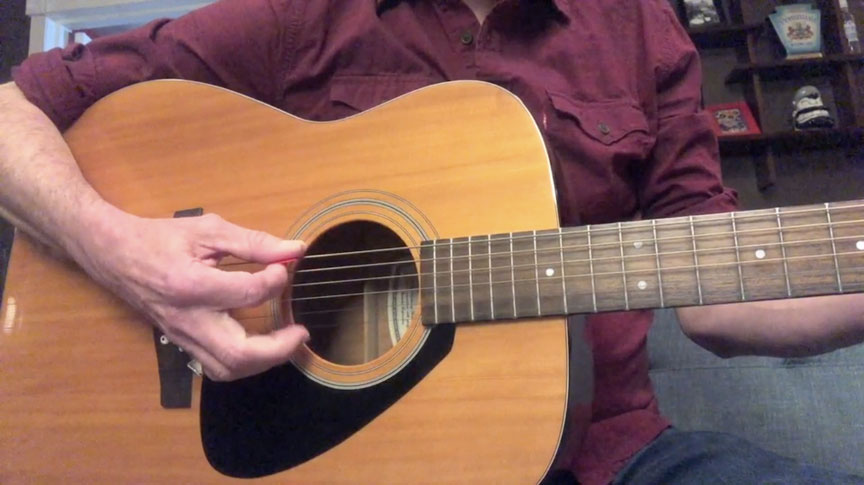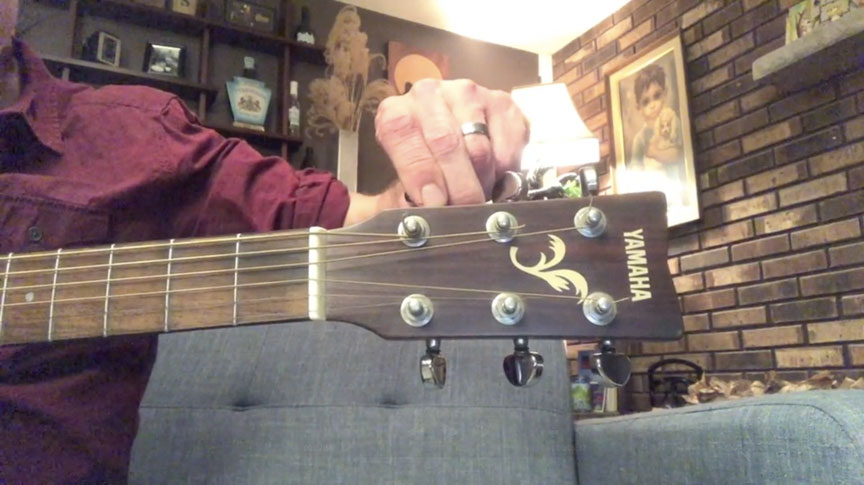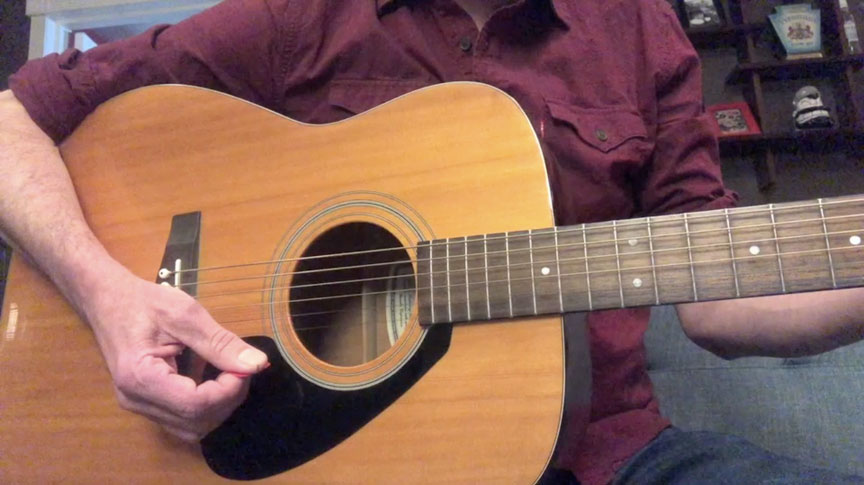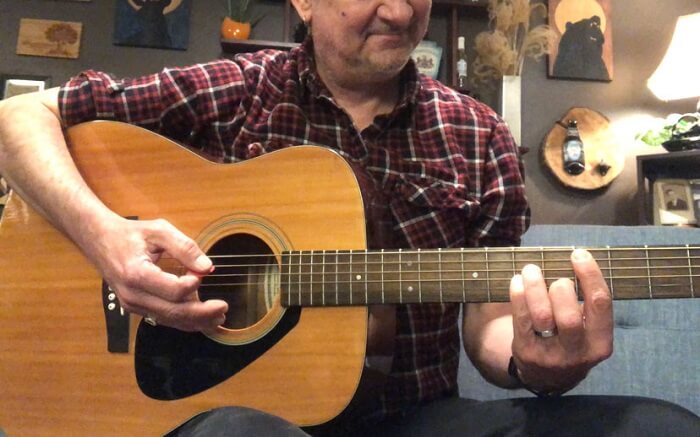How to Tune Your Guitar For Beginners (5 Easy Steps)
This page contains affiliate links. We may earn money or products from the companies mentioned in this post through our independently chosen links, which earn us a commission. Learn More

Knowing how to properly tune a guitar is an essential thing for all guitar players to know how to do. It will make your playing experience a lot better, you will definitely sound better, and anyone that you play with is going to like and respect you a lot more for it.
If you’re a beginner, it’s understandable that tuning might seem a little intimidating at first. To be honest, the first time I picked up a guitar I was afraid to touch the tuning pegs because I was worried that I was going to break something. But, rest assured, there’s really nothing to be afraid of.
So, if you follow these simple tips, you’ll find that tuning is really not that complicated and it’s something that you can master in a very short amount of time. Also, the more you do it, the easier it will get and the quicker you will be able to do it.
What's Here
Why You Should Trust This Review
I’ve been playing guitar and making music for approximately 35 years, mostly based out of Los Angeles, CA. I’ve played in several bands, been involved with several recording projects and played countless shows all over the world.
As a band member I have been a leader, a follower and a team player, primarily playing punk and alternative styles of music. I’ve never taken a formal guitar lesson but I have learned a lot from other musicians by simply playing along with them, asking questions and picking up tips and tricks here and there.
I continue to enjoy the experiences I get from playing and touring, and a big part of that is because I’m still able to learn so much from other guitar players.
Tuning Your Guitar At A Glance: What Steps To Take
- Learning the Strings
Once you learn which string is which, you will become better and more efficient with tuning them.
- Using the Tuning Pegs
It’s important to keep every string properly tightened so they will achieve their perfect tone and harmony.
- Using a Tuner
Learning how to use a tuner is an extremely important part of learning how to tune a guitar in the first place.
- Fine Tuning Your Strings
When you are done with your first round of tuning, go back and recheck all of your strings to make sure that they are in tune.

Things To Keep In Mind When Tuning A Guitar
In this article, we’ll expand on some of the basics when it comes to tuning your guitar. It can be difficult and confusing for beginners who have never been taught how to properly do it, but it’s really not a very complicated or lengthy undertaking. And, the more you do it, the quicker and easier it will be for you.
Learning Which String Is Which

If you don’t know what string you are tuning, the more challenging it will be to tune it. So, it’s very important to learn the name of each guitar string. And an easy way to memorize the names of your strings is to follow this acronym:
Eddie
Ate
Dynamite
Good
Bye
Eddie
The first letter in all of those words is the name of a guitar string; beginning at the top and working your way down. So, starting with the top string (the biggest one) and working your way down, the names of the strings are:
E for Eddie
A for Ate
D for Dynamite
G for Good
B for Bye
E for Eddie
So, the names of the strings are: E, A, D, G, B, E – Eddie Ate Dynamite Good Bye Eddie
Knowing How To Use Your Tuning Pegs

The next thing that you need to focus on is how to use the actual tuners, which can also be referred to as the tuning pegs. A guitar string is basically a very tightly wound spring, and its tone will change depending on how loose or tight it is.
So, when you’re tuning and you want to maintain that proper tension, loosen the string first, and then slowly tighten it until it gets to where it should be. Loosening and then tightening each string will create a good amount of tension, which will help to keep your guitar in tune while you play.
Using A Tuner

There are a lot of different tuners out there that you can buy, and there are also websites and apps that you can use at no cost to get your guitar in tune. But, no matter what tuner you are using, they are all based on the same basic principle. Each string and its corresponding note are all set to a very specific frequency.
That being said, regardless of what tuner you are using, all you really have to do is follow the lights. When you pluck one of your strings, the tuner will recognize which string you are playing and which frequency you are trying to match, and the tuner will tell you if you are too high, too low or perfectly in tune.
Fine Tuning Your Strings

After you have done your initial tuning, you may think that your guitar is perfectly in tune. However, that may not be the case. As I mentioned, a guitar string is basically a very tightly wound spring, and the more they get tightened, the more tension they create, which means that the balance of all of the strings can be thrown off.
So, after you’re done tuning your last string (the high E string), go back to your Low E string and see if needs a little fine tuning. (Remember to tighten your strings up to maintain proper tension.) Then, you can do the same thing with the rest of your strings, starting from the top and working your way down.
Final Thoughts
Knowing how to tune your guitar and knowing how to keep it in tune are incredibly valuable skills to learn. Not only will you sound better, but you will definitely have a better time playing on your own and with other players.
Tuning a guitar is not a difficult or complicated skill to learn, and it doesn’t take long to master. And, the more you tune, the happier you will be in the long run.


